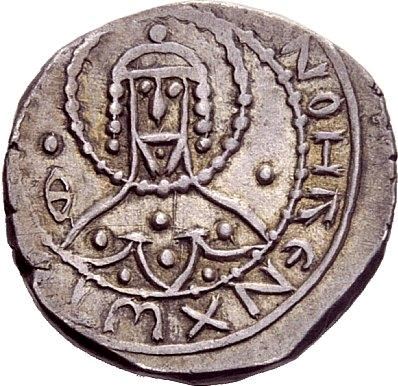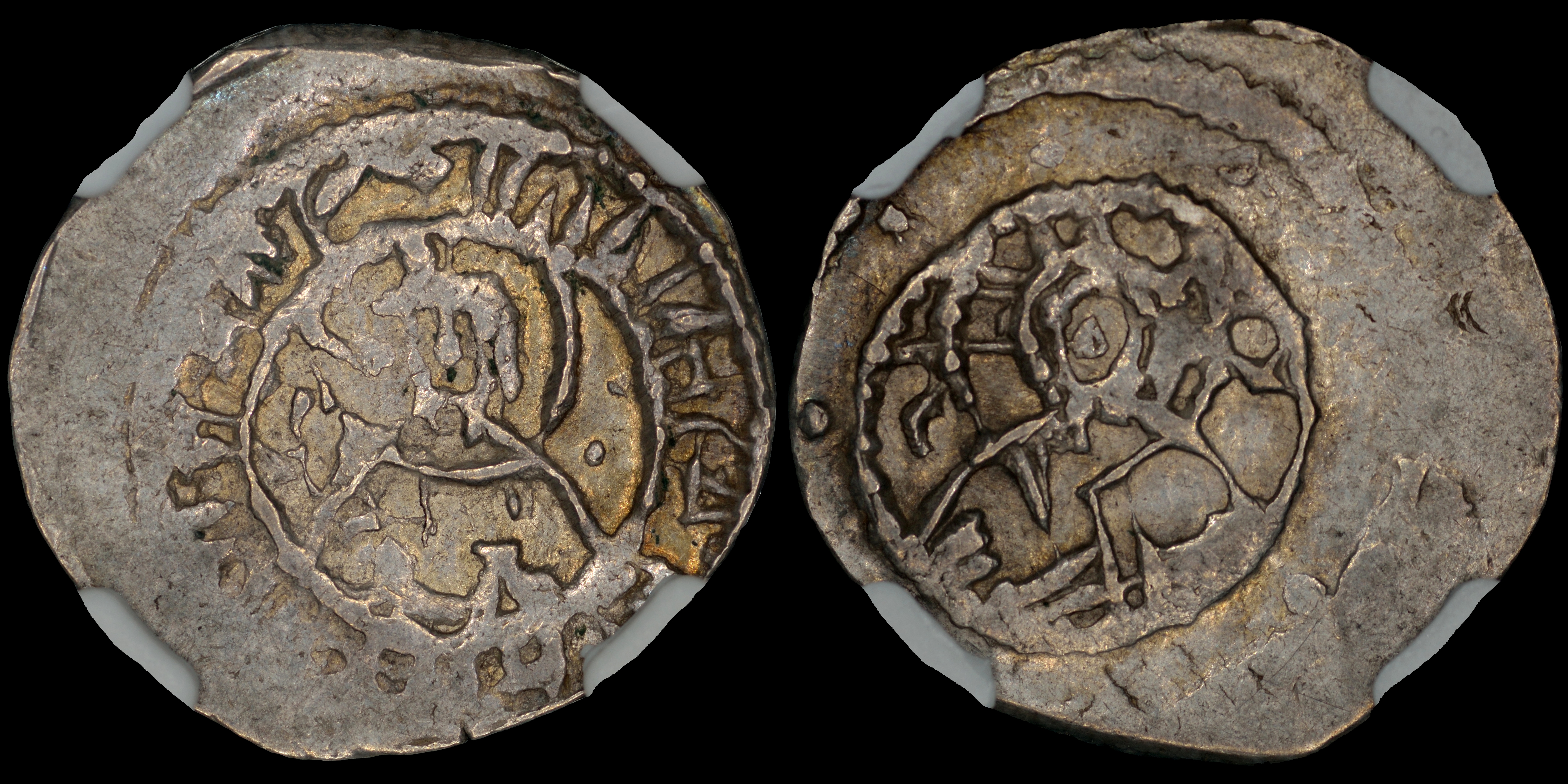The Stavraton was a type of silver coin used during the last century of the Byzantine Empire. They were large silver coins introduced by Emperor John V Palaiologos in circa 1367 and used for the last century of Byzantine history.
Fractions were also struck - the Half-Stavraton initially weighed 4.4 grams and gradually declined to 3.7; the one-eighth, known as the doukatopoulon or aspron, weighed circa 1.1 grams. Quarter-stavrata were not minted.
All these coins featured a bust of Christ on the obverse and an imperial bust on the reverse. The inscriptions are fairly uniform, with the reverse featuring an inner and an outer inscription: "+[Emperor's name] ΔΕCΠΟΤΙC Ο ΠΑΛΕΟΛΟΓΟC / Θ[ΕΟ]V ΧΑΡΙΤΙ ΒΑCΙΛΕVC ΡWΜΑΙWN", i.e. "Lord (despotes) [Emperor's name] the Palaiologos / by God's Grace, Emperor (Basileus) of the Romans".
Fractions were also struck - the Half-Stavraton initially weighed 4.4 grams and gradually declined to 3.7; the one-eighth, known as the doukatopoulon or aspron, weighed circa 1.1 grams. Quarter-stavrata were not minted.
All these coins featured a bust of Christ on the obverse and an imperial bust on the reverse. The inscriptions are fairly uniform, with the reverse featuring an inner and an outer inscription: "+[Emperor's name] ΔΕCΠΟΤΙC Ο ΠΑΛΕΟΛΟΓΟC / Θ[ΕΟ]V ΧΑΡΙΤΙ ΒΑCΙΛΕVC ΡWΜΑΙWN", i.e. "Lord (despotes) [Emperor's name] the Palaiologos / by God's Grace, Emperor (Basileus) of the Romans".

(1)
John VIII

An
AR
Half-Stavraton
struck 1421/5-1448
in
Constantinople
Obverse: IC-XC, Facing bust of Christ
Reverse: WANHC BACILEVC (or DECPOTIC) Q PALEOLOGOC, Facing bust of emperor
Diameter:
-
Die Orientation: -
Weight: -
Die Orientation: -
Weight: -
in NGC slab choice VF
SB 2565; Grierson 1519; LPC 172, 2; PCPC 349
